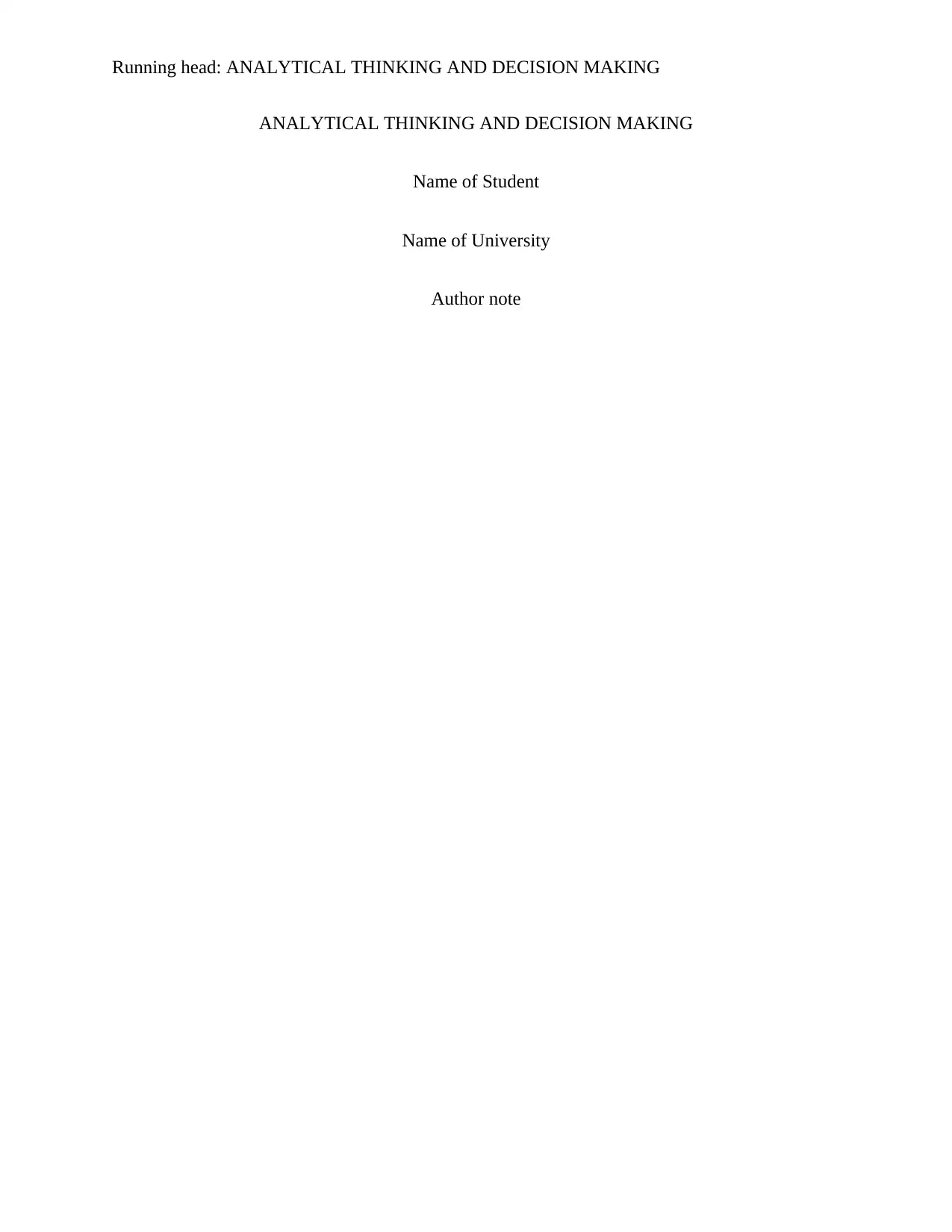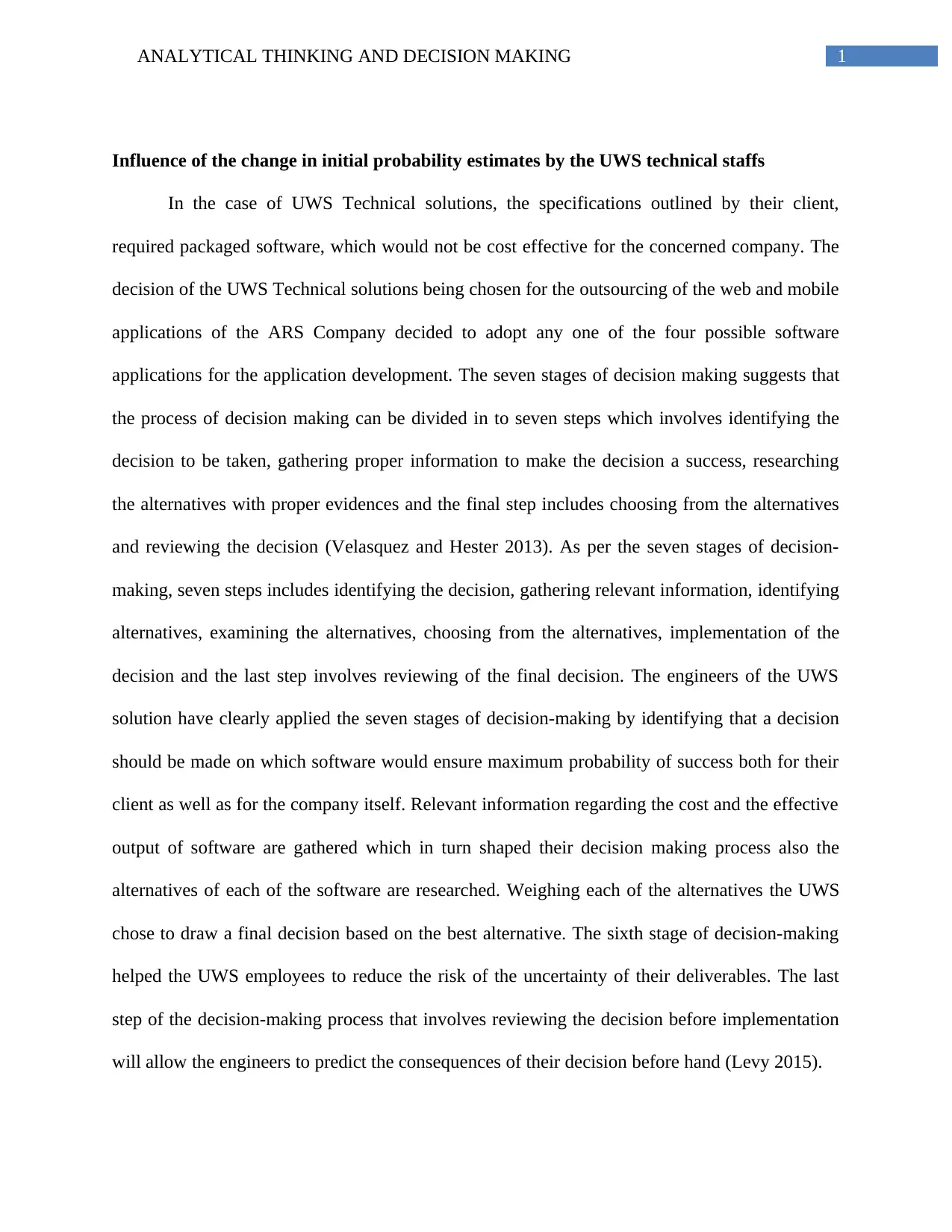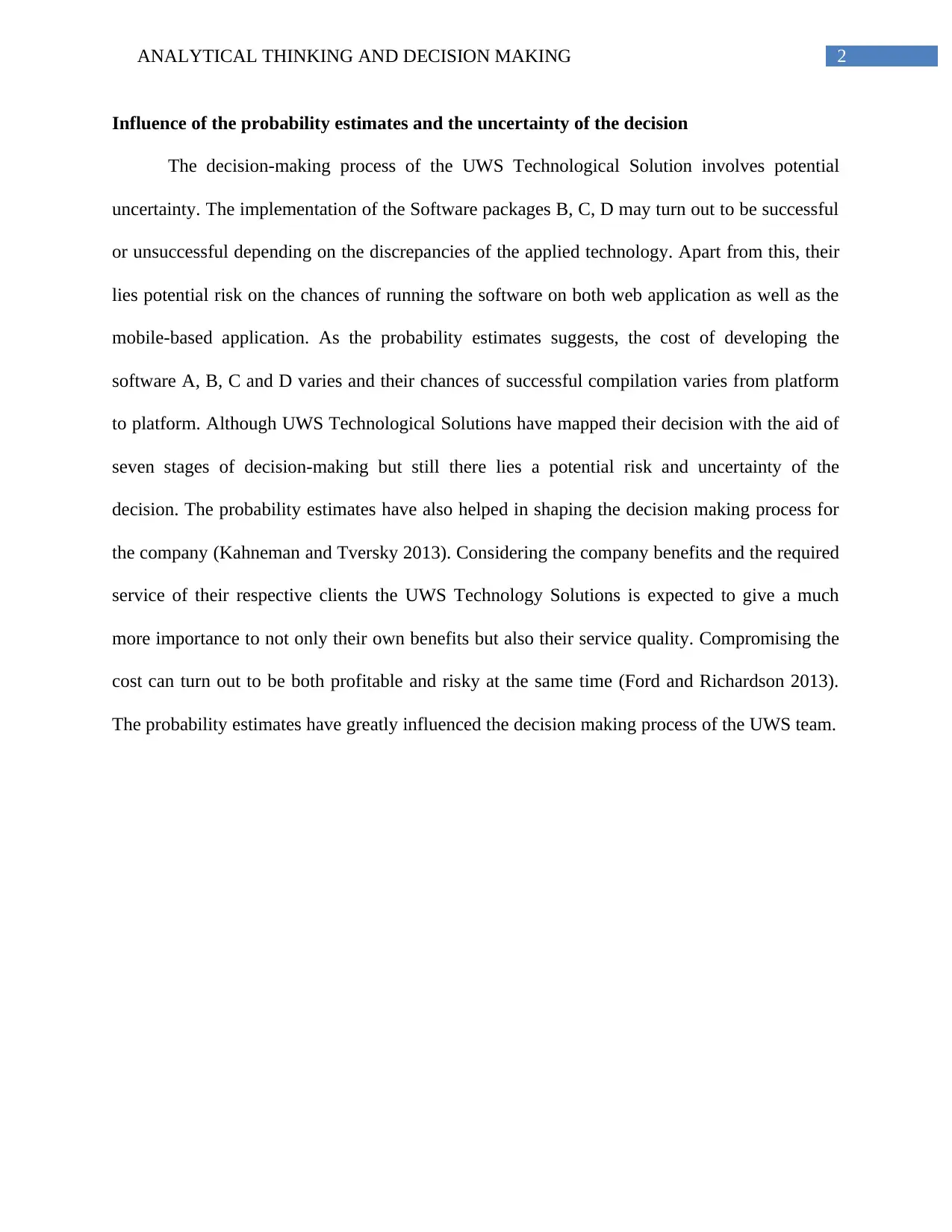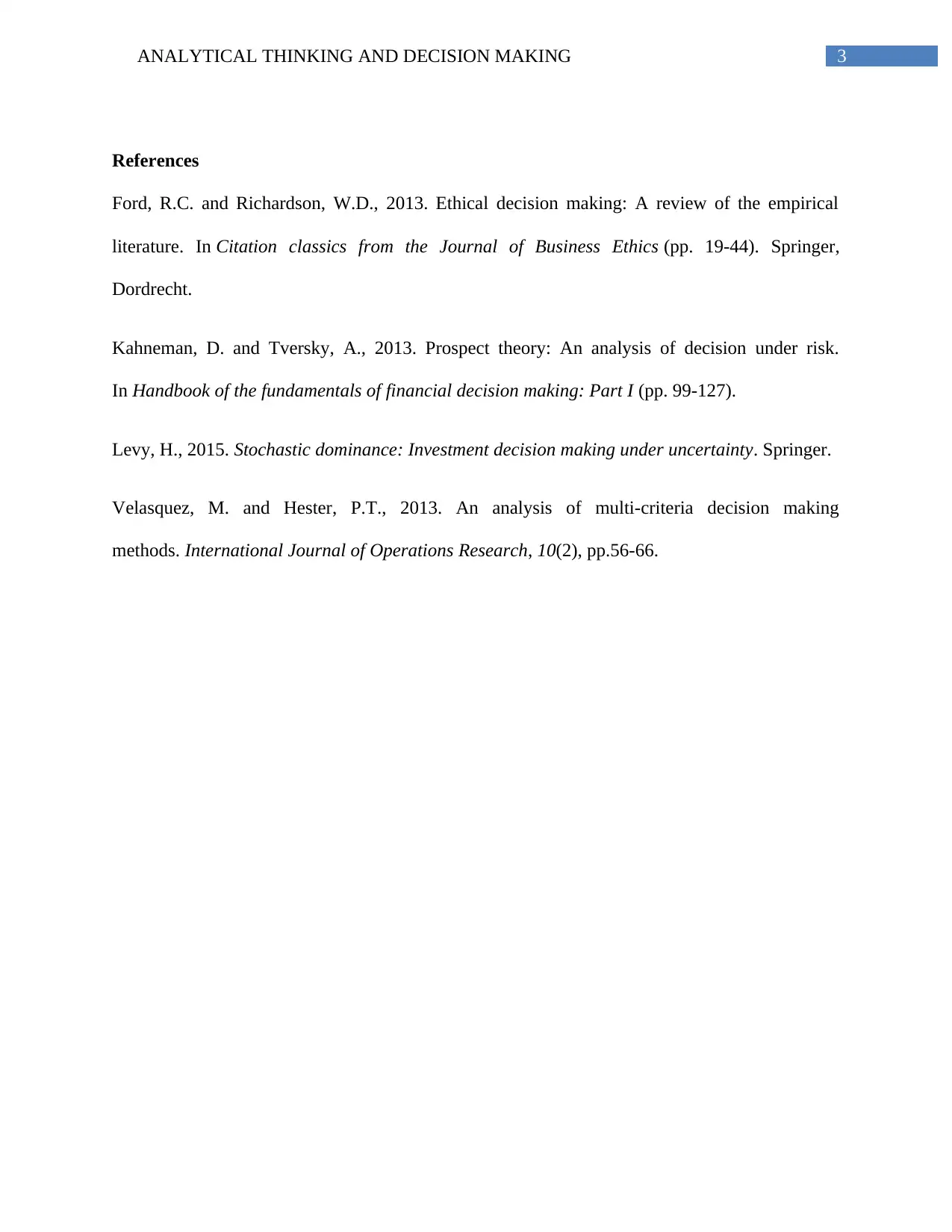UWS Technical Services: Decision-Making Using Decision Analysis
VerifiedAdded on 2023/06/15
|4
|739
|136
Case Study
AI Summary
This case study provides an analysis of UWS Technical Services' decision-making process, focusing on the challenges they face in selecting the optimal software application for their client, ARS Company. The solution applies the seven stages of decision-making, emphasizing the importance of identifying the decision, gathering information, researching alternatives, and reviewing the decision. It explores the influence of probability estimates and the uncertainty involved in the decision, particularly concerning the success of different software packages and their compatibility with web and mobile applications. The analysis uses decision analysis techniques, including the development of a decision tree and the calculation of expected values using the rollback method, to recommend the most suitable approach for UWS Technical Services. The case study also discusses the strengths and limitations of the decision analysis approach, providing strategic recommendations for the managers of UWS Technical Services to mitigate risks and ensure service quality.
1 out of 4











![[object Object]](/_next/static/media/star-bottom.7253800d.svg)